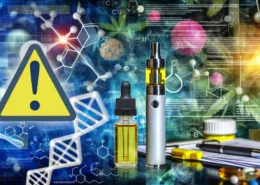What is Nicotine Buzz? Effects and Risks Explained
If you’ve ever used nicotine pouches or other nicotine-containing products, you may have heard people talking about experiencing a “buzz.” This sensation, often described as a rush of relaxation, alertness, or lightheadedness, has piqued the curiosity of many. But what exactly is a nicotine buzz, and how does it affect the body and brain? In this comprehensive article, we’ll dive deep into the science behind the nicotine buzz, exploring the mechanisms at play, the factors that influence its intensity and duration, and the potential risks associated with nicotine use.
Understanding the Nicotine Buzz
The term “nicotine buzz” refers to the array of physiological and psychological effects that nicotine has on the body when consumed through various means, such as smoking, vaping, or using nicotine pouches. While the term “buzz” is often associated with nicotine, it’s not exclusive to this substance; people may also use it to describe the effects of consuming other stimulants like caffeine or even sugar.
To grasp the concept of a nicotine buzz, it’s essential to understand how nicotine interacts with the body’s nervous system and brain. The brain relies on chemical messengers called neurotransmitters to facilitate communication between neurons and cells. Each neurotransmitter has a unique role in transmitting messages throughout the body and responds to different stimuli.
The Neuroscience of Nicotine
When nicotine enters the body, it targets specific receptors found in the peripheral and central nervous systems called nicotinic acetylcholine receptors. By binding to these receptors, nicotine triggers a cascade of events that lead to the release of various neurotransmitters, each with its own set of effects on the body and mind.
Some of the key neurotransmitters involved in the nicotine buzz include:
- Acetylcholine: This neurotransmitter plays a crucial role in cognitive function, and its release may temporarily enhance focus, attention, and memory.
- Norepinephrine: Also known as noradrenaline, this neurotransmitter is associated with increased alertness, arousal, and the body’s “fight or flight” response.
- Dopamine: Often referred to as the “feel-good” neurotransmitter, dopamine is linked to feelings of pleasure, reward, and motivation. Its release may contribute to the temporary mood boost and satisfaction that some nicotine users experience.
- Glutamate: This neurotransmitter is involved in learning, memory formation, and synaptic plasticity. Its release may lead to short-term enhancements in cognitive performance.
- Endorphins: These natural opioids produced by the body are known for their pain-relieving and mood-elevating properties. The release of endorphins may promote feelings of relaxation and well-being.
The intricate interplay of these neurotransmitters, along with nicotine’s impact on other systems in the body, such as the adrenal glands, culminates in the sensation of a rush or “buzz” that nicotine users often report.

Factors Influencing the Nicotine Buzz
While the basic mechanisms behind the nicotine buzz are universal, the intensity and duration of the experience can vary significantly from person to person. Several factors contribute to these differences, including:
Individual Sensitivity to Nicotine
Everyone’s body is unique, and the way individuals respond to nicotine can differ greatly. Some people may be highly sensitive to nicotine, experiencing a strong buzz with a relatively low dose, while others may require a higher amount to feel the same effects. This variation in sensitivity can be attributed to factors such as genetics, metabolism, and overall health status.
Nicotine Tolerance
Regular nicotine use can lead to the development of tolerance over time. As an individual continues to consume nicotine, their nicotinic acetylcholine receptors may become less responsive, requiring higher doses to achieve the same level of stimulation. Additionally, the brain may adapt by creating more receptors, further contributing to the need for increased nicotine intake to experience the desired buzz.
Nicotine Strength and Delivery Method
The strength of the nicotine product and the method of delivery can significantly impact the intensity and onset of the buzz. Higher nicotine concentrations may result in a more rapid and intense sensation, while lower concentrations may produce a more gradual and subtle effect. The delivery method, such as smoking, vaping, or using nicotine pouches, can also influence how quickly nicotine reaches the brain and how long the buzz lasts. For example, smoking and vaping typically deliver nicotine to the brain more rapidly than nicotine pouches, which may result in a quicker onset of the buzz.

Potential Risks and Considerations
While exploring the science behind the nicotine buzz, it’s crucial to acknowledge the potential risks and health concerns associated with nicotine use. Some of the key points to consider include:
- Addiction: Nicotine is a highly addictive substance, and regular use can lead to dependence and withdrawal symptoms when attempting to quit. The development of tolerance and the brain’s adaptation to nicotine can make it increasingly difficult for individuals to stop using nicotine products.
- Short-term effects: Nicotine use can cause immediate physiological changes, such as increased heart rate, blood pressure, and digestive issues. These effects may be more pronounced in individuals with pre-existing health conditions or those who are new to nicotine use.
- Long-term health risks: Prolonged nicotine use has been associated with an increased risk of certain cancers, respiratory problems, and cardiovascular disease. While nicotine itself may not directly cause these conditions, it can contribute to their development and exacerbate existing health issues.
- Impact on brain development: Nicotine can have negative effects on brain development, particularly in young people whose brains are still maturing. Exposure to nicotine during adolescence and early adulthood may lead to long-lasting changes in cognitive function, emotional regulation, and addiction susceptibility.
Given these potential risks, it’s essential for individuals to make informed decisions about their nicotine use and prioritize their health and well-being. If you are struggling with nicotine addiction or considering quitting, it’s important to seek support from healthcare professionals and explore evidence-based cessation methods, such as nicotine replacement therapy, counseling, or medication-assisted treatment.
Conclusion
The nicotine buzz is a complex phenomenon that arises from nicotine’s intricate interaction with the body’s nervous system and brain. By triggering the release of various neurotransmitters, nicotine can produce a range of effects, from increased alertness and focus to feelings of relaxation and pleasure. However, it’s crucial to recognize that the intensity and duration of the nicotine buzz can vary significantly from person to person, influenced by factors such as individual sensitivity, tolerance, nicotine strength, and delivery method.
While some individuals may find the temporary effects of a nicotine buzz appealing, it’s essential to weigh these short-term sensations against the potential long-term risks and health concerns associated with nicotine use. By providing accurate, science-based information, we aim to empower readers to make informed decisions about their nicotine consumption and prioritize their overall health and well-being.
If you’re considering using nicotine products or are currently struggling with nicotine addiction, remember that help is available. Don’t hesitate to reach out to healthcare professionals, support groups, or trusted loved ones for guidance and assistance in making positive changes for your health and future.
- Pakistan Halts Vape Crackdown Pending Legislation - July 4, 2025
- Wisconsin New Law Banning Sale of Most Vape Products - July 4, 2025
- Vaping Laws in Oklahoma: A Comprehensive Guide for 2025 - July 3, 2025








